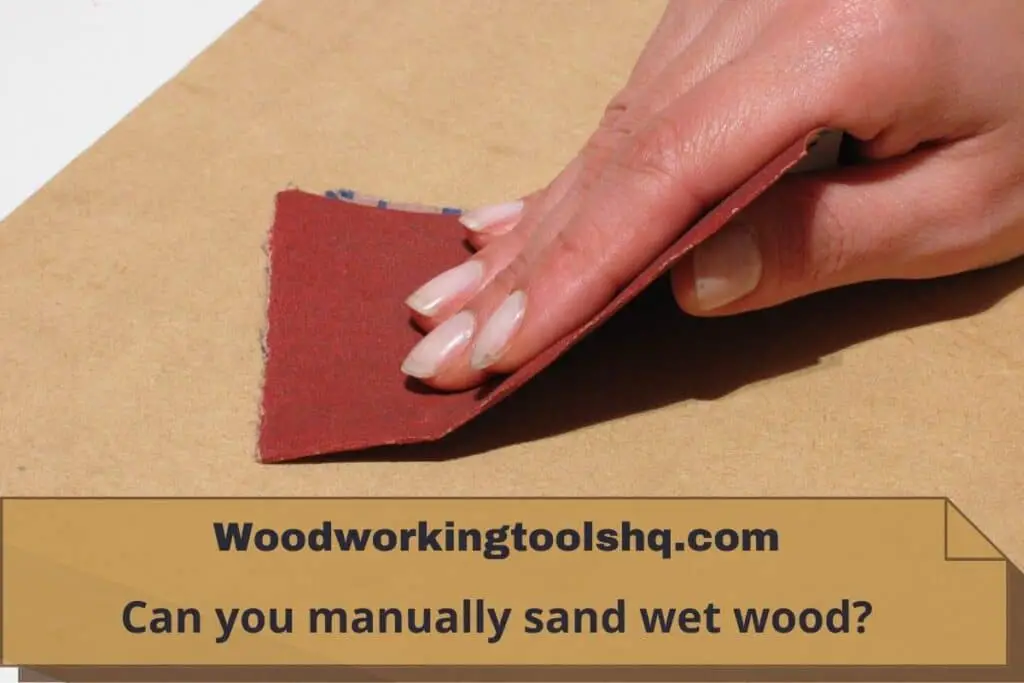When it comes to sanding wood, wetting it before sanding is a common practice. But is it a feasible approach?
Let’s explore the circumstances in which wet sanding is necessary and when dry sanding is just fine.
Can you sand a wet wood?
It is possible to sand slightly damp wood as long as the intention is to wipe off some fiber grains and achieve a smoother surface for the next finish application.
Water or any liquid works as a lubricant that raises the grains on softwoods, making it easier to sand them off.
However, it is important to note that the wood should not be too wet, or wet sand grit paper must be used.
Wet Sanding vs Dry Sanding
Wet sand grit paper is a type of sandpaper that soaks up some amount of moisture while making the surface smoother.
Wet sanding works well with wood that is not thoroughly damp.
On the other hand, dry sanding is recommended for preparing dry wood for staining, especially softwoods like pine, fir, and cedar.
Before using sand grit paper on dry wood, it’s better to wet the surface to take off the fibers thoroughly.
For hardwoods like walnut and maple, dry sandpaper can be applied without any lubricant as these woods do not have many fibers.
Dry sanding creates some tooth on the surface, which helps the stain or paint color to hold onto the surface and last longer.
If grains rise, sanding after finishing will do the job just fine.
To Get a Better Finish
To get a better finish, it is crucial to consider the moisture content of the wood.
Freshly cut wood must be dried for at least a year to remove the underlying moisture and prevent grain growth.
Only thoroughly dried wood can be sanded to achieve a smooth finish by dampening some amount of water on it.
Partially dried wood can also be sanded, but the fibers will rise soon after it is thoroughly dried. This is especially true for outdoor woods that have been affected by rain or humidity.
Why do many carpenters sand on wet wood?
The main reason why do people sand is because of the thought that is “watering over a surface rises grains” which is partially true.
In general, if you look for many wood experts don’t do wet sanding as they know it a lot depends on the types of wood as well the needs.
Getting a smooth finish is not all about sanding better, but the types of wood should be in mind as well the condition of the wood. I
f it has been soaked in heavy rain for years by sitting outside.
Then it’s hard to get an even finish no matter what technique you are apt for unless you dry it out.
Secondly, it’s actually an easy way to wipe off any dirt stain by applying some water and rag it than using dry sandpaper.
So, that’s also the reason to count in people usually find it easy.






